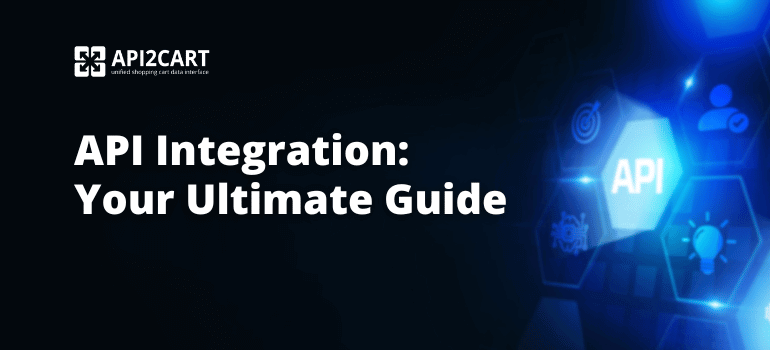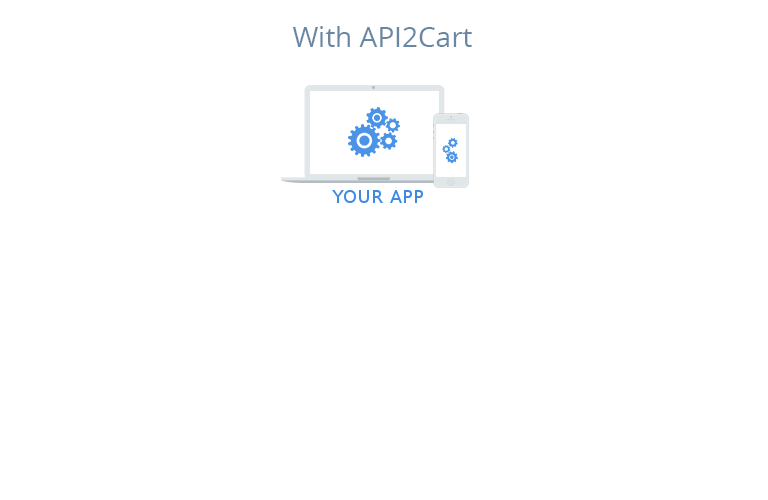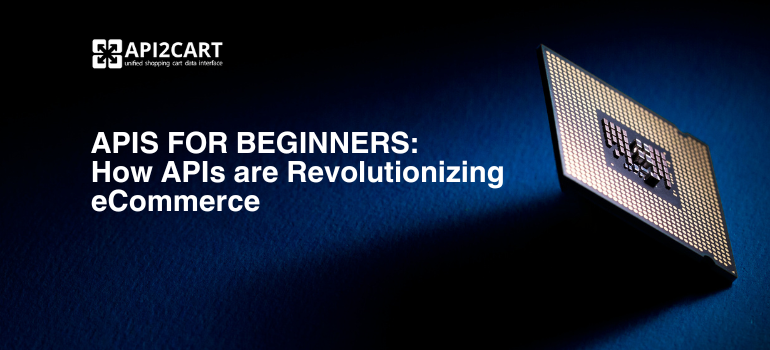
Introduction
Today, API integration has become one of the key activities in the era of digital transformation of eCommerce software and applications. It allows for real-time interaction and the sharing of information between multiple applications, thus improving business processes and clients’ experiences.
The world we live in today is a digital world and this has radically transformed the IT sector to provide ways and means of prospects and publicity. However, the transformation is subjected to certain challenge that force the businesses to go beyond their rim and let third-party applications and systems to come and pass through their business processes.
Applications and systems need to communicate seamlessly. Such a connection and synchronization is possible with the integration platform-as-a-service (iPaaS) model, delivered via API.
The concept of API integration allows organizations to transfer and process more data between the applications and systems used for critical business functions. It offers a diverse range of methodologies for businesses to allow flawless communication and information sharing between applications.
Before this article unfolds the many benefits of API integration and its importance for businesses, here's what an API means.
An API or Application Programming Interface is a software code, normally termed as an intermediary between two applications, that allows the applications to communicate with each other and share information. In other words, an API facilitates data transfer between two systems using API request and response model as a medium of communication.
It is now clear that applications and systems communicate with each other via APIs but how does the process work?
How are APIs able to talk with each other?
Here’s where integration serves the purpose.
What is API Integration?
Let's explore how API integration works. Integration is the process of establishing a safe, reliable, and efficient connection between the APIs of two applications so they can talk to each other and share data. The integration allows businesses to use data from multiple applications to improve the functionality of their own business processes. It is the incorporation of more functional technologies into a business’s already existing technology stack. It allows enhancing the capabilities of internal workflows and customer experience.
In the process of integration, the applications that are involved do not change their internal structure and functioning. However, their individual APIs need to be very strong so as to prevent any failure during and after integration.
API integrations also require a platform to get in place. Platforms of this type are referred to as integration platforms. These are locations for managing your integrations and API access for businesses for constructing their integrations. For a company’s software ecosystem that changes and grows constantly, integration platforms enable the changes in integration, updating and swapping of APIs, addition of process automation and other features.
Why is API Integration Important?

The need and benefits of integration cannot be ignored, especially if the company deals with cloud-based applications and tools. It forms the basis of connection and communication between cloud apps and other systems in the process.
Here are some more reasons why API data integration is important.
Seamless connection between multiple apps and systems
No matter what apps and systems are employed in an organization, they all need to communicate with each other to maintain synchronization between themselves. Such sync is established with the help of API integration. From cloud-based applications to best-of-breed solutions, integration can connect them with each other and business applications to establish an all-encompassing technology stack.
Improved team productivity
Integrations via APIs boost team productivity as they eliminate the task of manually connecting applications and data sources. The developers, coders, and other IT staff can be available to handle more important IT activities rather than establishing connections and maintaining APIs. Moreover, such integrations have the capability to engage non-technical staff into creating and managing their own APIs.
Easy creation of new API connections
Earlier creation of new APIs was limited to either using the available options or creating new ones from scratch. The first option brings limited functionality and little to no control over its operation. The second one is time-consuming, costly, and resource-eating. You may consider the number of times you will need to build an API to allow your applications the exposure to new data. However, with API integration platforms, creating a new API is as easy as a few clicks. There's no need for additional investment. You can build a new API using your existing integration via the integration platform.
Planning an Integration Development
Building an API integration from the ground up requires knowing about the systems you want to connect and the skills to do the job. When strategizing your integration, consider the following steps:
- Specify the objectives of the project
- Acquisition of resources
- Analyze schemes of the system (relationship between data)
- Develop and test
- Assess performance
Concerning the integration, what problems will be solved? What will be the interaction of the end-users with the integration?
Which tools, skills, and people you will need to build the integration?
How can you ensure that you can have the correct connections between systems, platforms, applications, and trading partners to enable data exchange?
Develop the integration as per the laid down plan of integration. Also, thoroughly perform some tests on the integration to confirm that it works before going live. After it is running smoothly, consider it officially ‘launched’ and use it regularly from then on.
Include procedures and methods to evaluate the performance and functioning of the integration on an ongoing basis.
What can be the Overall Cost of API Integration?
Therefore, the cost of building an API integration can be high or low depending on the following factors:
- Complexity of the integration
- Integration of many systems
- Customization of the integration
The cost of integration can quickly skyrocket depending on the kind of integration and the amount of time your developers will spend. One integration alone can easily hit $10,000 or more.
Some of the costs that may be involved in building an API integration include:
- Development costs: This is the cost you incur to hire developers to develop the integration and any software tools or frameworks that you might require.
- Testing costs: Every integration needs to be tested, in order to verify correct working as well as compliance with all stakeholders’ requirements. This may require creating test environments or setting tests on auto pilot or manual tests.
- Integration platform costs: If the integration is going to be more complicated, it might require the usage of an integration platform or middleware to facilitate the integration. For instance, these can be anything from cloud based solutions to more elaborate on premise solutions.
- Maintenance and support costs: After the implementation of the integration, it will require constant updates and support to make sure that it will continue to work as it should and to address the dynamic requirements of the company.
The approximate cost of building an API integration starts from a few thousands of dollars. Moreover, it can go up to tens or even hundreds thousands of dollars.
Best Integration Examples
From the dropbox attachment you send through an email to the slack notifications you receive, almost everything in your IT world has a connection to API integration. The Tripadvisor that you refer to also collects data from hotels and airlines via API connections.
One of the most popular examples of API integration is the one in the eCommerce industry. B2B eCommerce software like inventory management, shipping software, ERP, and similar applications need to integrate with eCommerce platforms. As a result, they can get and manage store data from these platforms and perform their core functionality.
B2B software can provide their specific functionality to e-retailers only when they have access to store data. All the systems are dependent on such data to provide merchants with automation and management of their eCommerce business seamlessly.
For such an integration software vendors need third-party services like the one provided by API2Cart. It is a unified API that allows software vendors to integrate their applications with multiple eCommerce platforms at once. Hence if the software needs access to a list of customers, products, orders, or similar data from Shopify, Magento, WooCommerce or Amazon, they can send an API request to API2Cart.

API2Cart then sends the same request to the APIs of the eCommerce platforms. The latter responds to the API2Cart with requested data, which in turn transfers the same into API responses back to the software. This way, the software can access all the data it requires from the eCommerce platforms.
Moreover, with API2Cart integration solution, you can integrate your software with multiple shopping carts of your choice and expand your business.
Wrapping Up
API integration is an indispensable part of the digital era. Thriving businesses are already leveraging the multifold benefits offered by integration. Therefore, you should also consider it if you are willing to outperform your competition.
Integration plarform like API2Cart are your one-stop solution for all the integration needs. It allows your software to connect with more than 40 shopping carts and marketplaces in just one go. It, therefore, saves you a lot of time, money, and resources, which you would otherwise invest in developing separate integrations.
Moreover, with API2Cart methods, you cannot just access data related to customers, orders, products, or categories. You also get to edit, delete, and update it according to the requirements of the software process. The single API provides more than 100 methods to do so.
You just need to connect your software with API2Cart and it will automatically integrate your software to all the popular shopping platforms.
Are you ready to make your eCommerce integrations easier? Join API2Cart for a free demo right now and find out how our single API can integrate your software with over 40 shopping carts to increase efficiency and streamline your business processes. Connect to multiple APIs of eCommerce platforms easily and fast. Work with the data from Magento, Shopify, WooCommerce, Amazon, eBay and other platforms with no difficulties.




Murray's Cheese Coupons
July 2, 2021 on 4:42 pm
Great content! Keep up the good work!
Khrystyna Oliinyk
July 19, 2021 on 2:32 pm
thank you!